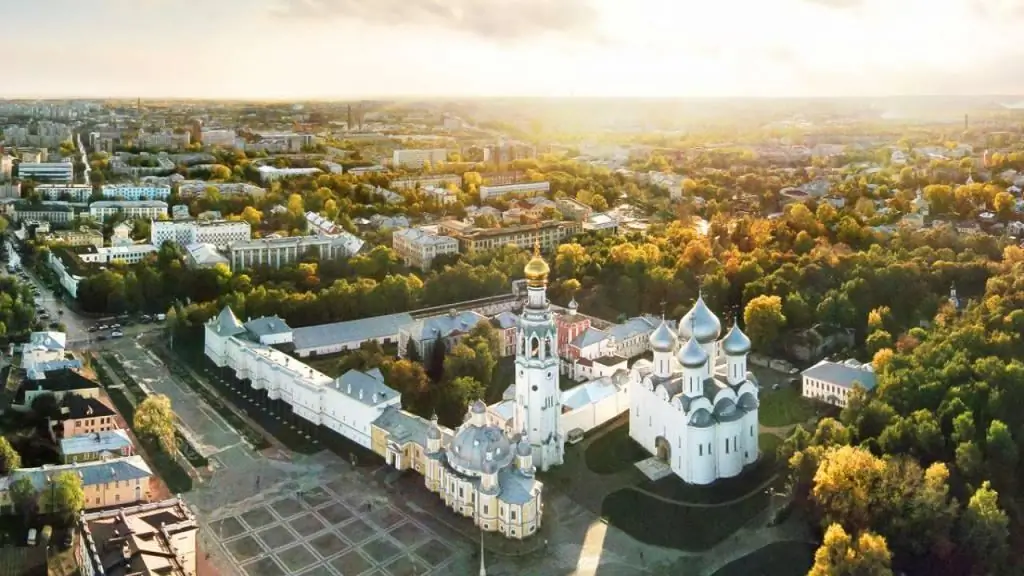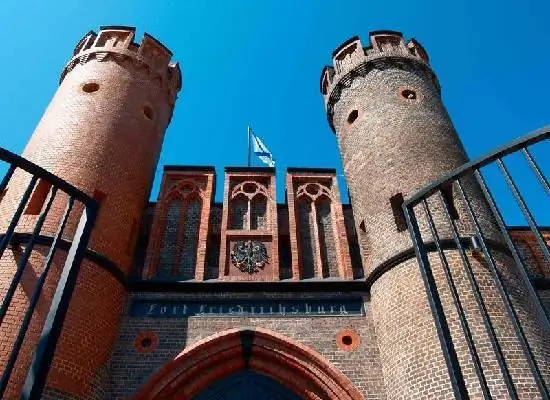- Author Harold Hamphrey [email protected].
- Public 2023-12-17 10:06.
- Last modified 2025-01-24 11:10.
The Tsaritsyno Greenhouse is a place that every nature lover should visit. However, the museum-reserve will attract attention not only with exotic plants, but also with its unique architecture, beautiful park and exciting legends.

History of Creation
Today, looking at the beauty of the Tsaritsyno lands, hardly anyone can assume that in ancient times these places were dissonantly called Black Mud because of the healing springs and mud located there. Pagans lived here - Vyatichi. In the 18th century, Tsar Peter the Great granted the land to Prince Dmitry Kantemir. The prince was from Moldavia, a manor was built for him here, and the Moldavians who settled around it planted gardens. The first greenhouse of Tsaritsyno appeared just then.
The last owner of the Kantemirov clan was Prince Semyon. Catherine the Second bought them from him, who was once helped by the healing mud of these places. The estate was renamed Tsaritsyno, to match its new owner. The Empress had huge plans for possessions - the constructionresidence of the Romanovs.
The most talented and eminent architects of that time, Vasily Bazhenov and Matvey Kazakov, were engaged in this project.

The project impressed with its scale and grandiosity. But later, Catherine cooled off to the estate, besides, such a large-scale construction required considerable costs. The architectural ideas of the great masters were fully realized only by 2007. And today anyone can admire the beauties of the museum-reserve.
Secrets of the estate
The history of the Tsaritsyn estate is shrouded in secrets and legends. And there are a lot of reasons for that. The estate was erected on the site of ancient burial places of the Vyatichi people. This was confirmed by the barrow, on the site of which the Kashirskoye Highway now lies.
Many believe that these places are cursed, and more than once. The first curse is attributed to the first wife of King Basil - Solomon. She was exiled to a monastery and killed along with her son on the orders of the king's second wife. The second time the estate was cursed by Princess Maria, daughter of Dmitry Kantemir, who was deeply unhappy while living here. Vasily Bazhenov, who designed the main buildings in Tsaritsyno, cast a spell on the estate with the help of a local sorcerer, offended by the tsarina for having ordered another architect to complete the construction.
Since then, misfortune has plagued the estate. Numerous fires prevented the organization of hospitals, schools, museums there at different times. Of course, there is no reliable confirmation of these legends. However, some researchers of the history of the village are firmly convinced that the reason that the estatewas empty for such a long time, it was precisely evil fate.
Arrangement of greenhouses
The first Tsaritsyno greenhouse was built in the middle of the eighteenth century by order of Prince Kantemir. Empress Catherine the Great, having become the owner of the estate, ordered to expand the greenhouses. Four gardeners were left to take care of the plants. Initially, the greenhouses were wooden, and only in 1785 a stone complex was built.
It is worth noting that the Tsaritsyno greenhouses not only grew plants, but also taught gardening to serfs. The maintenance of greenhouses was a very profitable business; exotic fruits were grown there, which were served at the table of the nobility. In addition, an extensive apple orchard grew in the estate.

The Tsaritsyno Greenhouse was constantly developing and growing. By 1804, two new buildings appeared, the collection of exotic plants was constantly replenished. Thus, at the beginning of the 19th century, the greenhouse in Tsaritsyno was considered one of the most extensive and richest in the world. In the middle of the 19th century, greenhouses were rented out, and the resulting crop filled the shelves of Moscow markets.
Decay of the estate
By 1820, the greenhouse consisted of eight buildings. The way the greenhouses in Tsaritsyno were called was due to the plants growing there. The Tsaritsyno complex included:
- grape greenhouse;
- orange greenhouse;
- orange greenhouse;
- peach greenhouse;
- pineapple greenhouse.
During the reign of Tsar Nicholas Iit was planned to demolish the dilapidated Tsaritsyno greenhouses and move the land to another place. It was decided to move the greenhouses to the Neskuchny Garden. But the idea was not realized. There was not enough space in that garden, and besides, the demolition of the Tsaritsyn lands would have led to a significant increase in prices in Moscow markets. The orange greenhouse was abandoned, and most of the plants from it were moved to St. Petersburg.
In 1858, on the initiative of Prince Trubetskoy, in whose department greenhouses were at that time, an audit of the Tsaritsyno lands was carried out and it was concluded that the economy was unprofitable. The greenhouses were completely leased out. Tenants often changed, over time, the greenhouses fell into disrepair.
Revival of the complex
By the end of the 20th century, Tsaritsyno lost its former gloss and we alth, turning into a holiday village. The revival of the complex began in 2007. To restore the original appearance of the Tsaritsyno estate, it was necessary to study many historical documents and drawings.

Colossal work was carried out, the masters managed to recreate the complex according to the projects of architects Bazhenov and Kazakov. Tsaritsyno is the largest architectural monument of Russian Gothic. The greenhouses of the Tsaritsyno Museum-Reserve have reopened.

It is important to note that the exposition of exotic plants was recreated according to the register records that were kept under Catherine II. The greenhouses were opened in 2011.
MuseumTsaritsyno. Greenhouses and palaces
The Museum-Reserve was reopened for visitors on the Day of the City of Moscow on September 2, 2007. Tsaritsyno is located in the southeast of the capital, you can get there both by private transport and by metro. The nearest metro stations are Orekhovo and Tsaritsyno, the complex is a ten-minute walk from them.
The territory of the reserve is more than 400 hectares. It has a vast park with ponds, greenhouses and a palace ensemble. The architectural palace ensemble includes restored buildings of the eighteenth century: three palaces, a bread house, a temple, as well as bridges and gates.
Each of these buildings is a unique architectural monument of the eighteenth century. The entire ensemble is made in pseudo-Gothic style with elements of baroque and classicism. The park houses the Milovida and Nerastankino pavilions, the Temple of Ceres pavilion and the ruin tower.
Tsaritsyno today
Today, the museum-reserve is open to every visitor who wants to plunge into the Catherine's era, get acquainted with exotic plants and admire the local landscapes. The Tsaritsyno greenhouse conquers with an abundance of fresh greenery at any time of the year. An innovation in the museum was a light singing fountain. There was a lot of debate about whether the fountain would fit into the landscape. The decision was made in favor of installing it, and now visitors can also enjoy a great show.

The number of rave reviews about the reserve is growing every day. Greenhouses conquer with a variety of plants,their collection is constantly updated. It is unlikely that anyone will remain indifferent to Tsaritsyno, having plunged into the exotic paradise of greenhouses, which will cheer you up even on a cold winter day.






